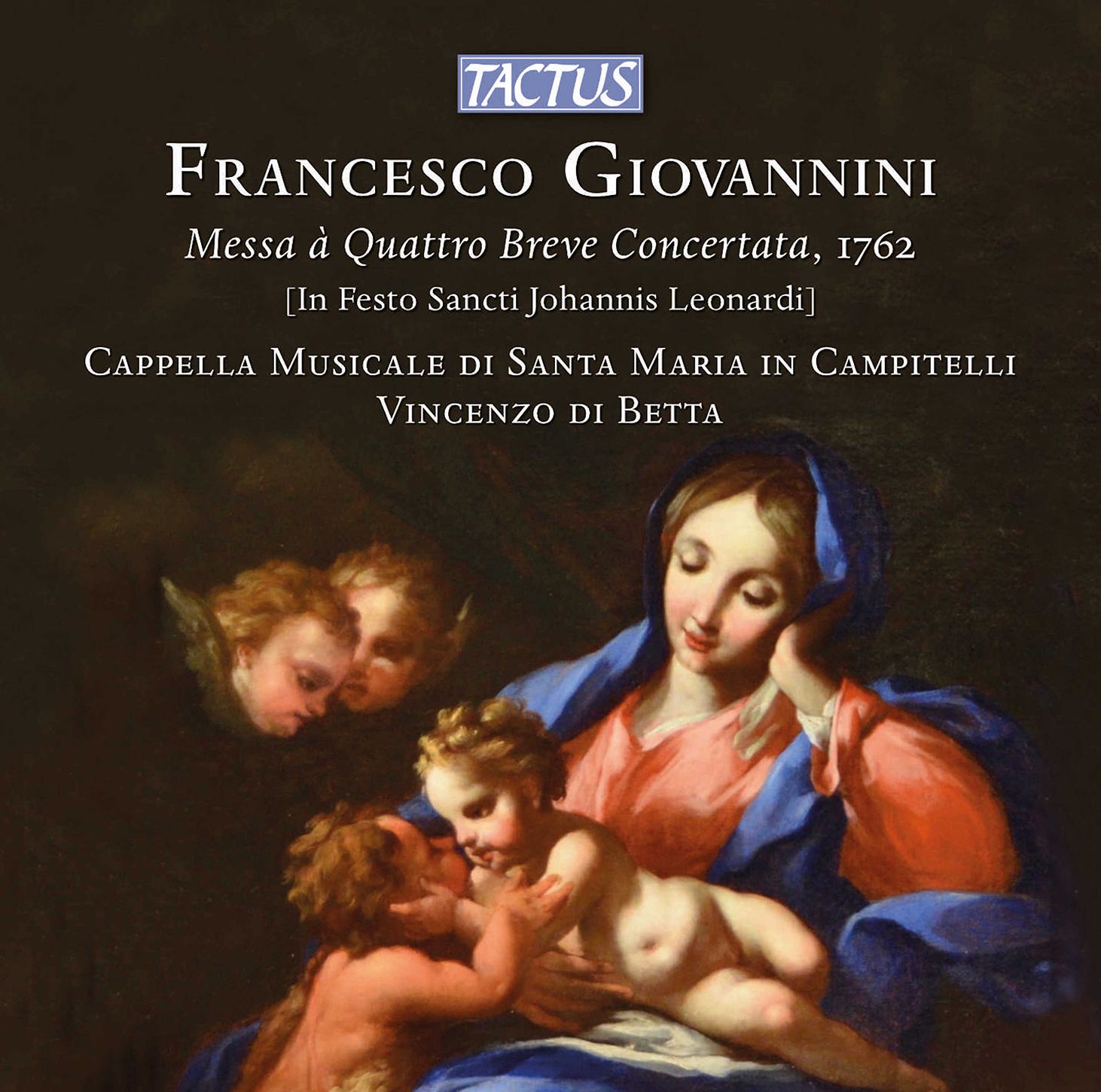Meeting Francesco Giovannini
Tactus continues its valuable work with a release giaranteed to elevate the listener

Ever since 2010, the Associazione La Cantoria has dedicated its energies to the rediscovery of unpublished musical compositions from Rome, transcribing, studying and performing these both live and recording them on the Tactus record label.
Here they feature the composer and organist Francesco Giovannini (1709/11 - 1775), who was chapel master at the Church of Santa Maria in Portico in Campitelli in the 18th century, and whose works are conserved in the archives of the Order of the Clerics Regular of the Mother of God in Rome (the organisation Giovannini entered around the age of 15).
The philosophy behind this recording is that the best way to understand and appreciate a liturgical musical composition is to savor it the very same context where it was born and for which it was conceived. This disc allows the listener to live through an ancient Roman rite. These late-Baroque compositions by Francesco Giovannini shine like precious gems set in an antique piece of jewelry made of Gregorian chant, readings, and orations, with some delicious organ inserts..
We start with an organ Tastata per Milone by Bernardo Pasquini (a composer we met here in sound format, and here in score format). The reason is that Tactus presents Giovannini’s Mass in the way it might have been heard, as part of a Roman rite in an imagined celebration of San Giovanni Leonardi, the founder of the Order of Clerics Regular. This is a fabulous performance of the Tastata per Milone, by organist Nicola Lamon:
... it is followed by some of the finest Gergorian chant singing I have heard from the Cappella Musicale di Santa Maria in Campitelli: the Introito, In sermonibus Domini:
The Missa itself (1762) is glorious. The movements are short, but well contrasted and they perfectly reflect their texts. Try the Kyrie against the beautifully serene Qui tollis (ane listen out for some phenomenal harmonic slights in the “Suscipe” section of the latter):
The “concertata” aspect refers to the use of solo voices in opposition to the full choir. The use of inserted Collects and an “Epistola” (the second letter to the Corinthians) and further Gregorian chants adds to the solemn nature of the presentation of Giovannini’s music. It is an approach that I, for one, would like to see more as it works most satisfyingly as a whole. When we get to the Credo, after the traditional solo voice “Credo in unum Deum”, there is an explosion of joy in the choir, the counterpoint positively celebratory. And how perfectly timed the solo passages!:
The Credo is by some margin the longest movement of the mass here, wth its sections deftly and beautifully articulated by Giovannini.
A rather nice insert is a piece by Giovannini himself, the lovely motet for voice and continuo, Qui pacem ponit, sung here by alto Antonello Dorigo:
One of the most astonishing tracks is another organ piece by Pasquini, this time between the Sanctus and Agnus Dei and preceding a Giovannini motet. Pasquini”s Ricercare del secondo tono is simply magnificent. The organist is, again, Lamon:
... Domenico Zipoli’s Canzona in C Major (performed here on organ, although the original collection it originates from - Sonate d’intavolatura per organo e cimbalo - indicates organ and harpsichord) is almost as appealing:
I wonder if there is a more beautiful track, though, than Giovannini’s Agnus Dei from the Mass? Less than three minutes, but what peace is found there!:
There is another Zipoli gem (a Verso in F-Major) immediately preceding the final track - and it is quite right the disc closes with a piece by Giovannini. It is the motat Ave regina coelorum, a motet for two voices and organ, performed by Anotonelli Dorigo and Antonia Harper, with Lamon:
A fitting post for a Sunday, then. This is a World Premiere recording, and incredibly valuable as such. The recording itself, made at Chiesa di Sant’ Amrogio della Massima, Rome, in July 2018, is excellent, as are the booklet notes. Tactus continues its valuable work with a release guaranteed to elevate the listener.
